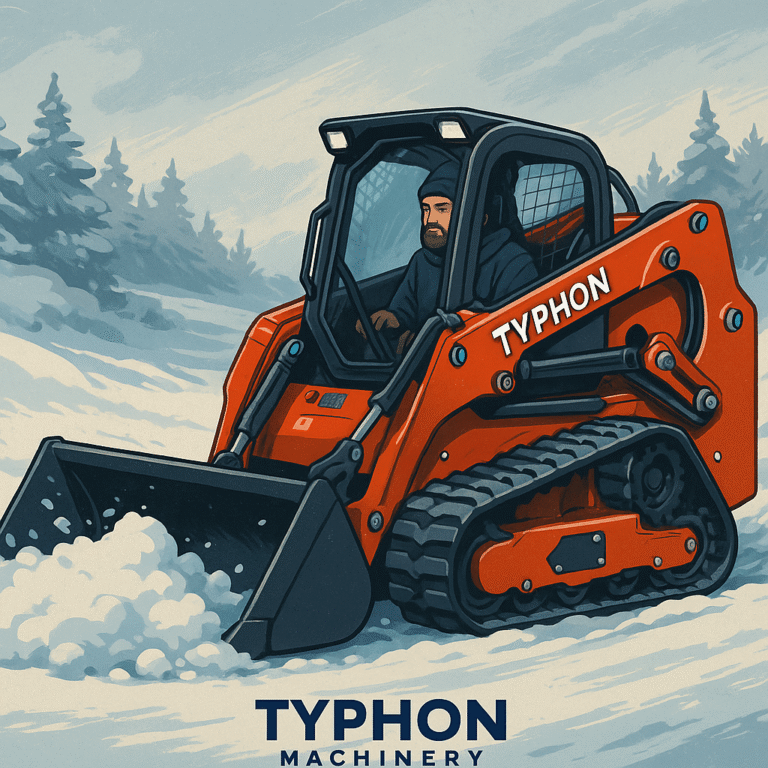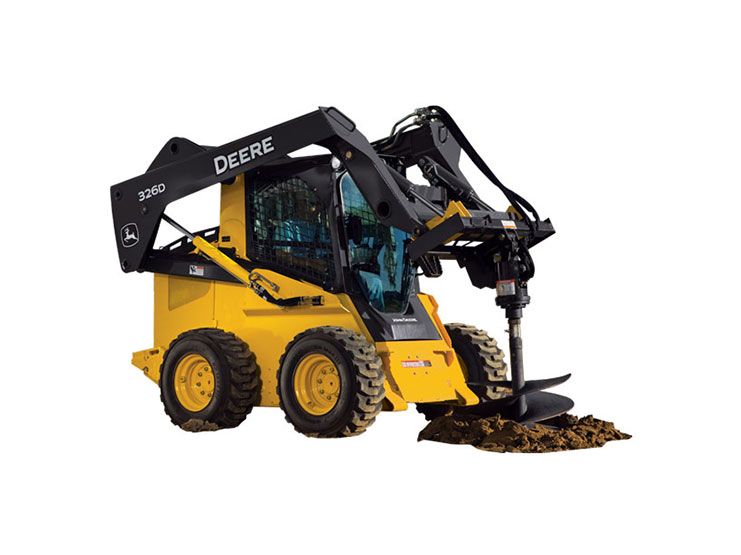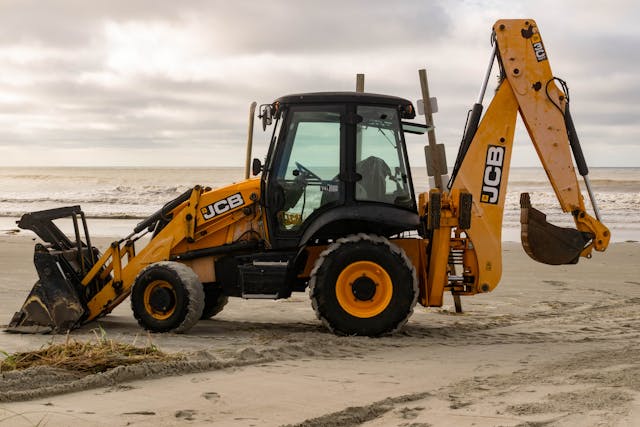Calculate Your Skid Steer Snow Removal Rates
Are you having thoughts on how to be competitive in pricing your skid steer snow removal services in 2024? On the condition that the factors involved are favorable, the charges for skid steer snow removal services can be anything from $85 to $150 per hour. At the onset of winter, selecting the proper pricing value for your snow removal business is imperative.
Those who are experienced operators and even the new ones do not understand the importance of accounting rates. Therefore, being proficient in order to be effective and efficient is the solution to make future profit instead of going at a loss.
In this article we’ll guide you through pricing techniques proven to be effective that numerous snow removal businesses have relied on. We are going to express everything that is necessary for generating the maximum revenue you want, ranging from expenditure on tools and wage rates to the per-push payment method plus contracts for a period.
Is it your dream to develop your snow removal activity into a huge profit-making contribution?
If yes, here are the inescapable factors that will have you not only recover the costs but also earn quite an income without setting prices too high.
Key Takeaways:
- Practically every market analysis shows that skid steer snow removal services cost between $85 and $150 in cash, which is the most common strategy used to set prices right.
- Proper pricing is mostly based on the following key factors: machinery costs, labor rates, and changes in snow removal needs.
- Various pricing models are suggested for the very diverse business needs:
- The anchor price goes directly to the budget of the venture. Thus the price includes operational costs such as fuel, insurance, and the rent of the machine to leave the owner with a profit. This way, the enterprise can earn money and survive the necessary bills to be paid to the workers and the insurance carrier for the next season.
The quantity of snowfall, the capacity of the parking lot, and the complexity of the service are some of the major factors that influence the decision on the pricing structures and that you should take into account.
Essential Cost Factors for Pricing
Equipment and Operational Costs
If you are working out the hourly rates of your skid steer snow removal, you should take into account the cost of your machine. It’s not only the skid steer purchase or lease price that needs to be considered, but also the fuel you use, its consumption, cleaning, and repairing. Trim the parts of your equipment that wear off for less fuel consumption and use the savings to reinvest in the company. Your usual equipment maintenance and repairs have to be timely.
It may be smart to estimate the level of fuel use for each job by checking your old bills. It is also important to remember to purchase new parts for the machine and keep a maintenance schedule. Such costs will certainly have a significant impact on your ability to offer your clients sustainable but reasonable prices.
Insurance and Overhead Expenses
To make your pricing strategy comprehensive for snow removal, it is very important to be covered by an insurance policy. Snow removal operations are known for the high risks connected with them hence the need to have vast insurance coverage. The basic insurance you must have for your business include: general liability insurance, equipment insurance, and worker’s compensation insurance
When it comes to the overhead costs, it isn’t just the cost of the insurance. There are other costs to consider such as administrative expenses, marketing, office supplies, and equipment storage costs. The pricing structure pray a vital role in the brilliant concept of the business because it helps in the calculation of desirable markup rates to book a consistent profit in the business.
Labor and Time Considerations
Labor costs are the single biggest item that has an effect on how much you are going to charge your customers. If you think about the amount that will be paid to the operators, how much will be spent on their training, and if you need any additional staff for bigger projects, this will give you the full list of the elements to be taken into account to calculate the amount of money spent. Time tracking is the key – consider, apart from the actual plowing time, the travel between the different sites and the preparation of the pieces of equipment.
To begin with, it may be helpful to create time estimates for various property sizes and conditions. This will be a good occasion to set a level for the normal prices but to be open for the unexpected effects of bad weather conditions and new requests. Besides, it is necessary to allocate extra charge for those employees who must attend to the problem at unscheduled hours or non-stop severe weather conditions.
💡 Key Takeaway: For a contractor to price his snow removal services, he should consider multiple factors including equipment costs, insurance arrangements, and labor salaries. It is important to keep the margin of the profits at a level that will cover the business running costs. Availability of the capital to run the business every day.
Pricing Models and Strategies
Per-Push Pricing Structure
Per-push pricing is a snow removal industry strategy that takes the market by storm because it is one of the easiest and most widely used ways to determine the price of snow removal. It is the easiest and most common way of calculating how much to charge. In this kind of pricing method, your customers will be asked to pay each and every time you remove the snow from their area. The standard rate might be set depending on the area size as well as the depth of snow accumulation.
When you are applying such pricing method of per-push, the most important issue would be that the depth of the snow has to be broken into blocks with corresponding payable amounts. If you run an operation, that is a property that is not all the time exposed to the snow, this method is the best to be followed.
Seasonal Contract Options
Seasonal contracts are great because you have a very stable economy for both contractors and clients. With this pricing model, clients pay a set fee for the whole period of winter, irrespective of the frequency of snow bringing no change. The seasonal contract generally relates to a segment, mostly running from November to March.
To find out about seasonal rates, go through historical weather patterns and estimate the operating costs of your firm. Offering attractive activities like payment plans to those who pay early or a discount of your price to your clients can make sure that this option gets a lot of interest from potential clients.
How to Calculate Hourly Rate
Hourly pricing is perfect for properties that are sophisticated or if the actual amount of work is uncertain. In the hourly rate you have to charge, try to figure out the costs you have to face for the machinery, the wages of the operator, fuel and the general expenses. The hourly rate a competitive skid steer snow removal vendor would charge would range from $125 to $175.
It is important to remember to include in the hourly charges the time spent traveling and the machines’ or equipment’s adjustment. This way, you can still make a profit, even though you charge consumer-friendly prices.
Measurement (Square Foot) Based Pricing
Square footage pricing is a straightforward system of figuring snow removing rates. The formula of this method is to set a base rate for each square foot and then to make changes depending on various property attributes and types of services. This way is especially suitable for businesses and residences with a large area.
Think about things like the character of the surface, the obstacles, and the place to move snow when you decide how to charge per square foot. Usually, contractors will charge their customers a minimum of $0.15 and a maximum of 0.25 per square foot for the snow removal they do in urban and commercial areas.
💡 Key Takeaway: The operative capacity and customer needs are the main factors to consider when choosing the pricing model. Choose one-time pricing if you need flexibility, resort to season contracts for a stable undertaking, choose hourly charges for complex works, or use square footage pricing for consistent billing.
Property-Specific Considerations
Commercial Properties
When enumerating the rates of snow removal for commercial real estate, there are some specific points to consider. The parking lot size and layout are the main factors that affect the price of the service; the larger spaces need more time and so more resources to clear the snow. It is very important to analyze such complicated parking layouts as those ones with more than one entrance, unloading places, or very tight corners when deciding the rate of service.
It is really the thickness of snow that is the key in pricing the cleaning of a commercial building. Moreover, heavy snow will require several rounds of cleanings and thus special equipment will be the direct cause of the increased cost of the service. Moreover, businessmen will require preventive measures against the formation of ice dams, which will have a significant impact on the pricing strategy.
Residential Properties
Homeowners’ snow removal rates vary from those of commercial places, as residential properties involve certain peculiar characteristics.
Snow removal pricing in residential settings usually revolves around the accessibility of the property and the length of the driveway and the configuration of the walkways.
Even though snow removal from residential areas becomes the subject of safety hazards especially ice formation and snow accumulation near entrances, rates need to be set with great caution. The presence of landscaping features, decor, or delicate surfaces may require extra care and time spent during the snow removal process.
💡 Key Takeaway: The nature of the property significantly shapes snow removal pricing, in the case of commercial properties, this means handling parking lots and ice control while residential services typically require more in-depth work, and one that is more personalized and clearing that is multi-faceted.
Final Talk
Determining skid steer snow removal prices is crucial for your company’ performance in 2024. Consider characteristics like equipment cost, labor costs, and seasonal charges to build a profitable and competitive pricing plan. Maintain ongoing monitoring of spending, sales, and customer feedback to update as required.
Make sure your price system, whether hourly rates, per-push pricing, or seasonal contracts, covers all expenses and generates desired profit. Offering several service bundles for diverse client demands and budgets ensures comprehensive coverage. Use these ways to set and calculate the best suited rates immediately. To start, evaluate existing expenses, identify your target market, and set profit targets.
A well-planned price structure and financial management may lead to a lucrative local snow removal company quickly.
FAQs
What maintenance costs should I consider when pricing skid steer snow removal services?
Consider regular maintenance costs like oil changes, hydraulic fluid, filters, and wear parts. Include unexpected repairs, tire replacements, and seasonal vehicle maintenance. They generally run from $1,500-3,000 per year depending on the use and age of the machine.
How does the availability of insurance impact skid steer snow removal pricing?
Insurance has a big impact on pricing. To the pricing structure, you have to add comprehensive commercial liability insurance, equipment insurance, and worker’s compensation. These cost about $2,000-5,000 on a yearly basis, which must be one of the costs when setting up a service rate.
What is the usual life expectancy of a skid steer used mostly for snow removal?
A properly maintained skid steer primarily used for snow removal can usually give you peace of mind for 8-10 years. It is important to note, however, that the number of hours of operation, the quality of maintenance, and the manner of use are some factors that affect the life of the equipment. Most machines are in good condition between 5,000- 7,000 running hours.
How do different snow conditions affect skid steer efficiency and pricing?
Snow circumstances evoke physical environment and morality. Snow is natural and has the same qualities as “good”. The ethical value is that snow formation requires water and proper temperature. Although the contrary is true, those of us in cooler climates appear to be totally reliant on agricultural revenue. A Ponderosa and old Sears building in Chippewa Falls received the most snow on their roofs, but no Metrodome-like catastrophes happened.
Should I offer different rates for emergency snow removal services?
Definitely, yes. Normally, emergency or after-hours snow removal works are priced at 1.5-2 times higher than a standard service. This increase in pricing is due to the immediate reaction time, higher labor expenses, and the high urgency of the case during extreme weather conditions.
What are the factors which influence the features to adopt between the terms of the seasonal contract and those of the per-push pricing?
If you look at the snowfall history, a property size of a snow-removal area, and what the customer wants. This is a very good option to have a stable income and at the same time snowfall predictions will have to be quite precise. Pay per service is a very tempting choice which gives freedom but it can lead to the fluctuation of revenue in some times. This decision completely depends on your market and business model.





